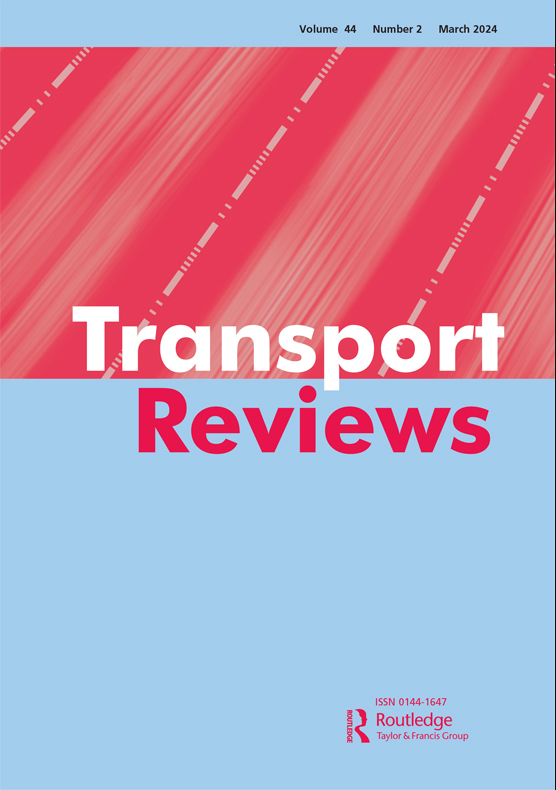Mobility as a feature (MaaF): rethinking the focus of the second generation of mobility as a service (MaaS)
IF 9.5
1区 工程技术
Q1 TRANSPORTATION
引用次数: 9
Abstract
Since its inception, Mobility as a Service (MaaS) has attracted significant interest throughout the transport fraternity, with numerous initiatives designed to unite “silo transport services” through a digital platform (Hensher et al., 2020). A key focus has been on promoting the ideals of sustainable outcomes with a particular emphasis on reducing private car use and promoting sustainable transport, especially public transport and micro-mobility. Since the “birth of MaaS” almost 10 years ago, we have seen very limited evidence of meaningful changes in users’ travel behaviour resulting from the many MaaS products, whether they are true MaaS or an enhanced trip planner. Why is this? We suggest that this has a lot to do with a focus on transport modes, transport suppliers and transport regulators where the real opportunity may have been stifled and missed. There is also an absence of any real effort to find ways of bringing the private car into the mix despite its dominant role in the mobility landscape (Hensher et al., 2022). Hensher (2020, 2022) suggested that a multi-service perspective may turn the tide as well as a recognition that the convenience of the private car needs to be embedded in a MaaS solution. Working with large insurance companies led both authors to realise that this multiservice idea can blossom when we engage with significant private enterprises outside of the transport sector whose focus is on what the customer really wants in a broad sense, unconstrained by the limitations or even ideologies of agencies that primarily focus on delivering transport services. Recognising that transport and travel are derived demand constructs, mobility offers should be seen as an input into a larger activity-based paradigm of service delivery. This service-delivery-paradigm offers a wide range of non-transport mobility services that are essential to customers, and we argue that it is in this service delivery setting that transport integration might flourish. We call this Mobility as a Feature (MaaF) as a nice way of moving away from a dominating multi-modal perspective to a multi-service perspective. But there is a twist – we suggest that the future of MaaF in terms of an appealing business case, and even commercial success, should be driven by organisations who do not have a direct vested interest in transport supply ownership, but who have an extensive customer base to enable them to focus on the delivery of a broad-based fully integrated activity solution that inputs a range of appropriate transport solutions. This next generation interpretation of MaaS will require some time to be fully tested, but its appeal is the result of learning from the first 10-year (or generation 1) period.移动即功能(MaaF):重新思考第二代移动即服务(MaaS)的焦点
自成立以来,移动即服务(MaaS)吸引了整个运输界的极大兴趣,许多举措旨在通过数字平台将“筒仓运输服务”结合起来(Hensher等人,2020)。一个关键重点是促进可持续成果的理想,特别强调减少私家车的使用和促进可持续交通,特别是公共交通和微型交通。自从近10年前“MaaS的诞生”以来,我们看到的许多MaaS产品对用户的旅行行为产生了有意义的改变的证据非常有限,无论它们是真正的MaaS还是增强的旅行计划器。为什么会这样?我们认为,这与关注运输方式、运输供应商和运输监管机构有很大关系,在这些方面,真正的机会可能被扼杀和错过了。尽管私家车在出行领域发挥着主导作用,但也没有任何真正的努力来找到将私家车纳入其中的方法(Hensher等人,2022)。Hensher(202022)认为,多服务的视角可能会扭转局面,并认识到私家车的便利性需要嵌入MaaS解决方案中。与大型保险公司的合作使两位作者都意识到,当我们与运输行业以外的重要私营企业合作时,这种多服务理念可以蓬勃发展,这些企业的重点是客户在广义上真正想要什么,不受主要专注于提供运输服务的机构的限制甚至意识形态的约束。认识到运输和旅行是衍生的需求结构,流动性服务应被视为对更大的基于活动的服务提供模式的投入。这种服务提供模式提供了对客户至关重要的广泛的非交通出行服务,我们认为,正是在这种服务提供环境中,交通一体化可能会蓬勃发展。我们称之为“移动即功能”(MaaF),这是一种从主导的多模式视角转向多服务视角的好方法。但也有一个转折点——我们认为,就吸引人的商业案例而言,MaaF的未来,甚至商业成功,应该由在运输供应所有权方面没有直接既得利益的组织来推动,但他们拥有广泛的客户群,使他们能够专注于提供基础广泛、完全集成的活动解决方案,该解决方案可提供一系列适当的运输解决方案。MaaS的下一代解释需要一段时间才能得到充分测试,但它的吸引力是从第一个10年(或第1代)时期学习的结果。
本文章由计算机程序翻译,如有差异,请以英文原文为准。
求助全文
约1分钟内获得全文
求助全文
来源期刊

Transport Reviews
TRANSPORTATION-
CiteScore
17.70
自引率
1.00%
发文量
32
期刊介绍:
Transport Reviews is an international journal that comprehensively covers all aspects of transportation. It offers authoritative and current research-based reviews on transportation-related topics, catering to a knowledgeable audience while also being accessible to a wide readership.
Encouraging submissions from diverse disciplinary perspectives such as economics and engineering, as well as various subject areas like social issues and the environment, Transport Reviews welcomes contributions employing different methodological approaches, including modeling, qualitative methods, or mixed-methods. The reviews typically introduce new methodologies, analyses, innovative viewpoints, and original data, although they are not limited to research-based content.
 求助内容:
求助内容: 应助结果提醒方式:
应助结果提醒方式:


